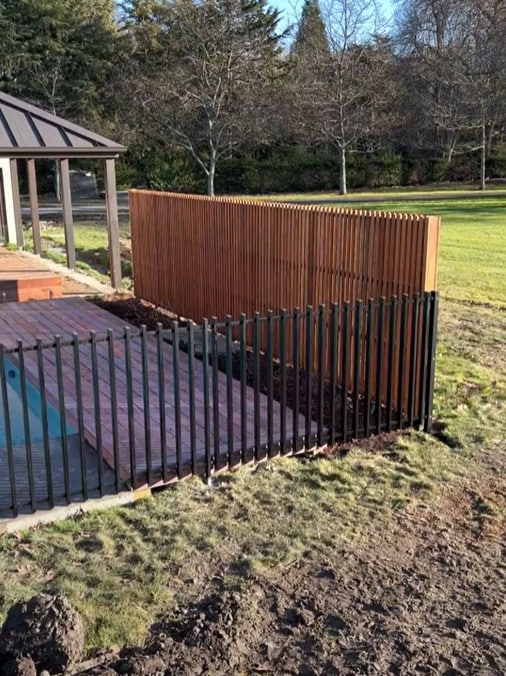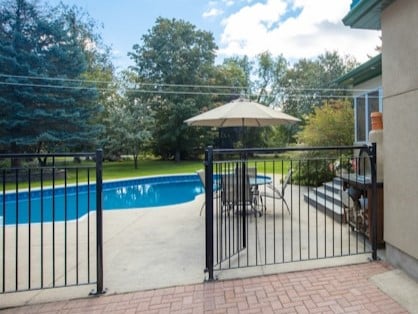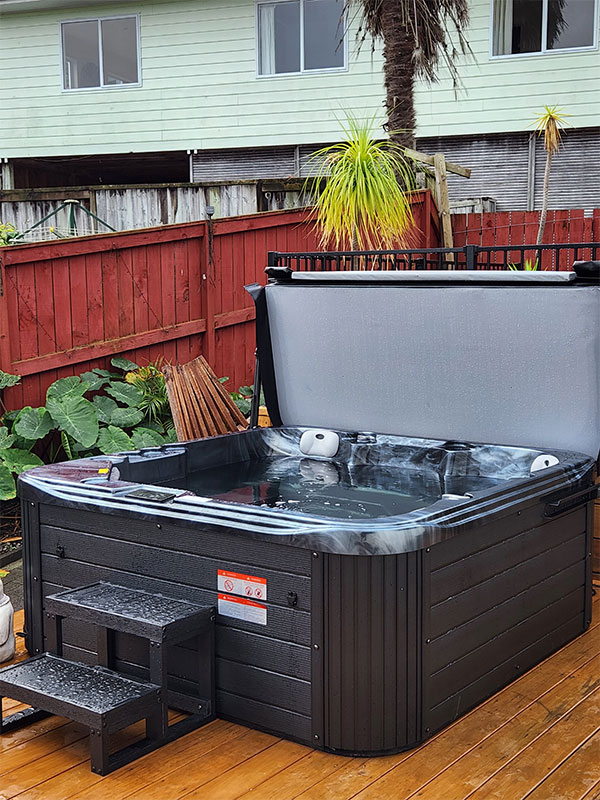Installing a pool at home is a great way to enhance your lifestyle, but many Christchurch homeowners overlook the importance of following pool fencing regulations. These laws exist not only to keep you compliant with the law but also to protect children and others from preventable accidents. Understanding the common mistakes people make can help you avoid costly rework, council fines, and serious safety risks.
Understanding Pool Fencing Regulations in New Zealand
New Zealand’s Building Code sets clear requirements for pool fencing to prevent unsupervised access by children under five. The code includes specifications around fence height, gaps, climbability, and gate hardware. All pool barriers must restrict access and meet durability standards, regardless of whether the pool is permanent or temporary. These regulations are regularly updated, so what was compliant ten years ago may no longer meet today’s safety expectations.
In Christchurch, pool fencing regulations are particularly important due to local environmental factors and council enforcement policies. Homeowners must meet the same national code, but Christchurch City Council also ensures that these standards are upheld through inspections and consent processes. Urban and suburban properties often have smaller spaces, making it even more crucial to get fencing design and placement right the first time.
Compliance matters not just from a legal perspective but also from a safety standpoint. A single gap or faulty latch can lead to tragic consequences. Even if a pool fence looks solid, it must meet exact measurements and safety features to be approved. Ignoring pool fencing regulations is a risk that no responsible homeowner should take.
The Role of Local Council in Pool Fencing Regulations
The Christchurch City Council enforces pool fencing regulations through consents and inspection requirements. Before installing a fence, homeowners may need to apply for building consent, particularly if the fence is part of a new pool project. Failing to secure consent can result in enforcement notices or penalties.
Once a fence is installed, council inspectors may visit to check that it meets the regulations set out under the Building Code. They assess the fence’s height, gate mechanisms, and proximity to any climbable structures. In addition to initial inspections, the council conducts regular follow-up checks every three years to ensure ongoing compliance, even if the fence has not been altered.
Maintaining an open line of communication with the council is vital. Christchurch homeowners should be proactive in booking inspections, asking questions about compliance, and staying informed about any updates to local or national regulations. When in doubt, it’s better to ask than to assume.
Mistake 1: Assuming Old Pool Fences Are Automatically Compliant
One of the most common pool fence mistakes is assuming that older fences are still compliant. Pool fencing regulations in New Zealand have evolved significantly, especially since the introduction of stricter laws in 2017. Fences built before that time may lack the features required to meet today’s standards.
Even if your fence passed inspection years ago, it may now require retrofitting or complete replacement. This could involve adding height, adjusting gate latches, or replacing panels to eliminate climbable gaps. Neglecting these updates puts your property at risk of failing council inspections and creates an unsafe environment for children.
Christchurch homeowners must recognise that maintaining a compliant pool fence is an ongoing responsibility. Regular checks and upgrades ensure your fence remains up to code, even as regulations change. Relying on outdated assumptions can quickly turn into a costly mistake.
Mistake 2: Incorrect Fence Height or Gate Latch Position
Fence height and gate latch placement are two areas where homeowners frequently fall short of compliance. According to current pool fencing regulations, a compliant fence must be at least 1.2 metres high with no climbable features within a specified distance. Many fences fail due to being just a few centimetres too low.
Latch height and direction are equally important. Latches must be positioned at least 1.5 metres above ground level or placed on the pool side of the gate, with no openings allowing easy access from the outside. Gates must open away from the pool and close automatically. These details are often missed during DIY installations or by contractors unfamiliar with pool-specific fencing standards.
In Christchurch, council inspectors routinely cite incorrect latch placement as a reason for non-compliance. These mistakes are avoidable with proper planning and professional installation. Cutting corners during installation can mean rebuilding sections of the fence after a failed inspection.

Mistake 3: Using Non-Compliant Materials
Not all fencing materials are suitable for pools, and using the wrong type is a frequent issue. Pool fencing regulations require materials that are non-climbable and structurally sound. However, many homeowners choose timber slats or wire mesh without understanding the compliance criteria.
Materials like timber must have minimal gaps between slats, and horizontal rails must not create footholds. Wire mesh, while inexpensive, often fails to meet the rigidity and spacing requirements outlined in the Building Code. Even glass panels can be non-compliant if they lack the correct thickness or fixing methods.
In Christchurch, several homeowners have been caught out by well-intentioned designs that failed to meet the standard. Choosing non-compliant materials often results in having to replace sections of the fence at your own cost, highlighting the importance of selecting products tested and approved for pool use.
Mistake 4: Landscaping That Creates Climbing Hazards
Landscaping may seem like a harmless way to enhance your outdoor area, but it can quickly compromise pool fence compliance. Trees, planter boxes, garden furniture, and even decorative rocks placed near the fence can become climbing aids that breach the climbability zone outlined in pool fencing regulations.
Pool fencing laws define a non-climbable zone of 1.2 metres on the outside of the barrier. Anything that provides a foot- or handhold within this space can invalidate your fence, even if the structure itself meets all height and strength requirements. Plants that grow over time can also create new hazards if not regularly maintained.
For Christchurch homeowners, this means planning landscaping with compliance in mind. Avoid placing raised surfaces near fences and choose low-maintenance plants that won’t grow into the climb zone. Work with professionals who understand how to balance design with legal obligations.
Mistake 5: DIY Pool Fencing Without Understanding the Rules
DIY projects can be satisfying, but when it comes to pool fencing, they often end in frustration. Many Christchurch homeowners attempt to install their own fences without fully understanding pool fencing regulations, only to fail inspections due to minor but critical errors.
The risks of DIY fencing go beyond non-compliance. Without the right expertise, it’s easy to overlook technical details such as proper gate alignment, latch positioning, or ground clearance. While DIY may save money upfront, the costs of retrofitting or starting again after a failed inspection often outweigh the initial savings.
Before attempting a DIY pool barrier, consult the Christchurch City Council’s guidelines and, ideally, speak with a fencing professional. Ensure your design is compliant before purchasing materials. In most cases, it is safer and more efficient to leave pool fencing to qualified experts who are familiar with local regulations.
Mistake 6: Neglecting Ongoing Maintenance and Inspections
Compliance does not stop once the fence is built. One of the most overlooked aspects of pool safety is ongoing maintenance. Hinges can rust, gates can warp, and nearby vegetation can turn a compliant fence into a liability over time.
Overgrown bushes, fallen branches, and even shifting soil can affect a fence’s structure. Regular checks are required to ensure that gates still self-close and latch correctly and that no climbable features have developed around the perimeter. Ignoring these issues can lead to non-compliance at the next scheduled inspection.
In Christchurch, the council is responsible for conducting three-yearly inspections of pool fences. Homeowners who fail these checks may be required to make immediate repairs or face penalties. Regular maintenance is a simple but effective way to stay compliant and protect your investment in pool safety.
How to Avoid These Common Pool Fencing Mistakes
The most effective way to avoid mistakes with pool fencing regulations is to hire a qualified and experienced contractor. Look for professionals who understand Christchurch-specific regulations and have a proven track record with compliant installations. They can help you avoid errors from the start.
Engaging local experts ensures that your design accounts for regional factors like ground movement, climate, and council expectations. Always keep clear records of inspections, approvals, and maintenance tasks. This paper trail can be valuable during future council checks or if you sell your home.
Plan ahead by booking regular fence checks before the busy summer season. Making adjustments early means fewer headaches when the weather warms up and inspections are due. With the right support, maintaining a safe and compliant pool area becomes a manageable part of homeownership.
Final Thoughts on Pool Fencing Regulations
Failing to follow pool fencing regulations can lead to fines, costly rebuilds, and serious safety risks. For Christchurch homeowners, compliance is more than a legal box to tick—it’s about protecting your family and others from harm. Understanding your obligations and avoiding common pool fence mistakes is the first step toward long-term safety and peace of mind.
When you prioritise correct installation, material choice, and ongoing maintenance, you not only stay on the right side of the law but also add value and professionalism to your home. A compliant pool fence is a visible sign that your property is safe, well-managed, and ready for summer.




